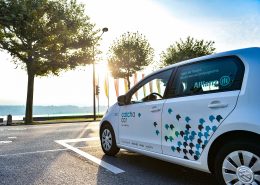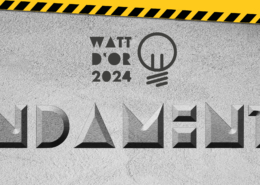The transport sector is a main contributor to energy consumption in developed countries and less energy intensive forms of mobility are therefore crucial for the success of energy consumption reduction strategies. Shared mobility modes – i.e. carsharing, bikesharing, carpooling – are encountering growing appreciation among the public but are also increasingly present in the discourse about the reduction of transportation negative externalities. Intuitively, this makes sense – and several studies document such benefits – but little is known on how such systems fit together, especially if they grow in size. This question is tackled by a project called “Sharing is saving” ongoing at the Institute for Transport Planning and Systems (IVT) at ETH Zurich and financed by the Swiss National Science Foundation (SNF).
This project aims at evaluating the opportunities offered by the recent success of shared vehicle systems in order to rethink the current transportation system, largely based on private cars, and move toward more sustainable and less energy intensive forms of mobility. It is funded by SNF as a support to the “Energy Strategy 2050” which aims at a consistent exploitation of the existing energy efficiency potentials and on the balanced use of the potentials of hydropower and new renewable energy sources. The main question which this research intends to answer is if and how the further diffusion of those modes could actually reduce the impact of mobility on energy consumption. The core of the project is therefore investigating how the selected shared modes should be combined in order to obtain this result, while keeping an eye on possible trade-offs for the society. This is made using an agent-based transport simulation software developed at IVT, called MATSim. Several hypothetical scenarios, representing different combinations and availability levels of collaborative mobility options, are generated and evaluated in terms of costs and benefits using simulations. To give more substance to the simulation part, another stage of the project , just started, aims at getting insight on the acceptability of the different scenarios generated at the previous stage. This is done through specifically designed surveys. The results of the survey will be used to estimate behavioral models which will be then implemented in the simulation. This will improve its realism and allow giving a final answer on what can be achieved in terms of reduction of energy consumption and other externalities with a large scale, combined use of various innovative mobility concepts.
In summary, our work will produce new knowledge about the possible impacts of shared mobility on the transportation system and on society. The results will provide an insight on how shared mobility modes could be integrated and if and how they will indeed reduce the energy footprint of transportation. The methodology developed will also help policy makers to understand better risks and chances of such modes and operators of the sector to elaborate new development strategies.
Dr. Francesco Ciari, Institute for Transport Planning and Systems (IVT), ETH Zurich


 Catch A CarCatch a Car: Mobilität im Wandel
Catch A CarCatch a Car: Mobilität im Wandel  Die Gewinner des Watt d’Or 2024: Das Fundament für die Energiezukunft
Die Gewinner des Watt d’Or 2024: Das Fundament für die Energiezukunft  Catch a Car – stationsungebundenes Carsharing in der Schweiz
Catch a Car – stationsungebundenes Carsharing in der Schweiz  Shutterstock"Eine verstärkte Nachfrage nach energieeffizienten Modellen ist wahrnehmbar."
Shutterstock"Eine verstärkte Nachfrage nach energieeffizienten Modellen ist wahrnehmbar." 


Dein Kommentar
An Diskussion beteiligen?Hinterlassen Sie uns Ihren Kommentar!